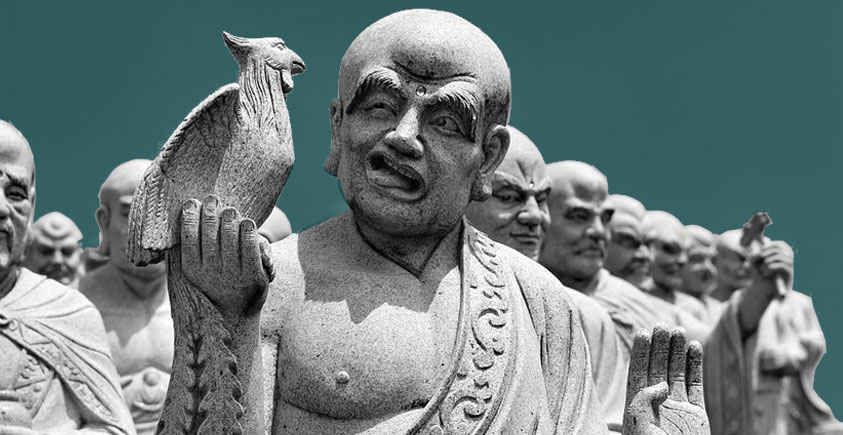Many people are new to the religious tradition of Buddhism and might not know how to communicate its principles. In this article, you’ll learn about a few ways Buddhism has been culturally appropriated and how it has impacted Buddhists.
What is Cultural Appropriation?
It can be done by wearing clothes from a different culture without understanding why they are essential to that culture. Another example is using an accent or language without understanding how it affects the people who use it.
Buddhism has been heavily appropriated in the past few decades. This has happened in both Buddhist temples and communities. Buddhists have taken aspects of Buddhism and used them for their purposes. Some of these purposes may be religious, like using Buddhist meditation as part of a corporate wellness program; others may be cultural, like creating “Buddhist weddings” with traditional ceremonies from other cultures thrown in.
There are a few reasons why this appropriation is problematic. First, it takes something that belongs to someone else and uses it without permission or respect. This can damage the reputation of the original culture, as well as the people who are being misused. Second, it can create confusion among people trying to understand Buddhism. When different parts of religion are taken out of context, it can lead to misunderstandings and conflict.
How Has Buddhism Been Culturally Appropriated?
Buddhism has been widely practiced in many different cultures for centuries. However some people have recently started appropriating the religion for their purposes. Some people use Buddhism to promote a particular image or idea without considering the consequences. In some cases, this has ended in a conflict between Buddhists and those who claim the religion is their own. Here are a few examples of how Buddhism has been culturally appropriated:
-Some people have used Buddhism to promote veganism and animal rights. This can be confusing for people who practice Buddhism and respect animals since it is against many of the teachings of the religion.
-Others have used Buddhist concepts and symbols to create new religions or spiritual practices. However they are not part of traditional Buddhism. This can harm Buddhists and those who believe in orthodox Buddhist teachings.
-Some people have used Buddhist symbols or images to create commercial products. They do so without permission from the original creators or owners of those symbols.
The Difference Between Appropriation and Coincidence
Cultural appropriation is the process of taking elements of one culture and using them in a manner that is not considered respectful or appropriate by the culture from which the parts were taken. You will often see profits being made too. It can be viewed as a form of racism, sexism, and classism. The concept of cultural appropriation has been around for a long time but became more prominent in the late 1990s – 2000s. This was due to increased social media use and the proliferation of blogs and online forums.
There are two main types of appropriation: intentional and unintentional. A deliberate seizure occurs when someone uses cultural elements without regard for the implications. They don’t consider the impact it has on the culture from which they are borrowing. Unintentional appropriation occurs when people do not realize that their actions could be seen as offensive or harmful.
There is a difference between cultural coincidence and cultural appropriation. Cultural coincidence is when two cultures share similar elements without any intention to take advantage of or disrespect the other culture. Cultural appropriation is when one group uses aspects of another group’s culture without respect or acknowledgment.
Some argue that cultural appropriation should not be a concern. They believe it is simply a result of humans sharing different cultures.
Pros of Cultural Appropriation
There are many benefits to cultural appropriation, both for the person appropriating the culture and for the culture being appropriated. For the appropriator, cultural appropriation can be seen as a way to explore and learn about different cultures without having to live in or travel to them. This can benefit people of all backgrounds, allowing them to better understand the world around them. Additionally, cultural appropriation can help reduce the racist and xenophobic attitudes often associated with traditional cultures. For the culture being appropriated, cultural appropriation can provide an opportunity for its members to receive recognition and attention from outside their community. This can help increase awareness and appreciation for the culture, which may increase its members’ opportunities.
When Can It Be Considered Illicit
Cultural appropriation is when one cohort of people adopts elements of another culture. However, they do not give that culture the same level of respect and appreciation as was given to it initially. This can be a problematic issue because it can erase the history and heritage of a culture. Therefore they are making it difficult for that culture to maintain its identity. Buddhism has been culturally appropriated by many different groups, most notably in the United States during the 1960s and 1970s.
However, this process didn’t always go smoothly. Many Buddhists adopted American values and lifestyles enthusiastically. However, others felt forced to do so due to discrimination and exclusion from mainstream society. This created tension.
The Different Ways to Address Cultural Appropriation
There are a few forms it can be addressed when it comes to cultural appropriation. The first way is to acknowledge a problem and work to ensure everyone involved is aware of the issue. Another way to approach the point is to identify which cultures are appropriated and why. Finally, some people believe that cultural appropriation should not happen at all. Cultural symbols should only be used when it is done respectfully.


